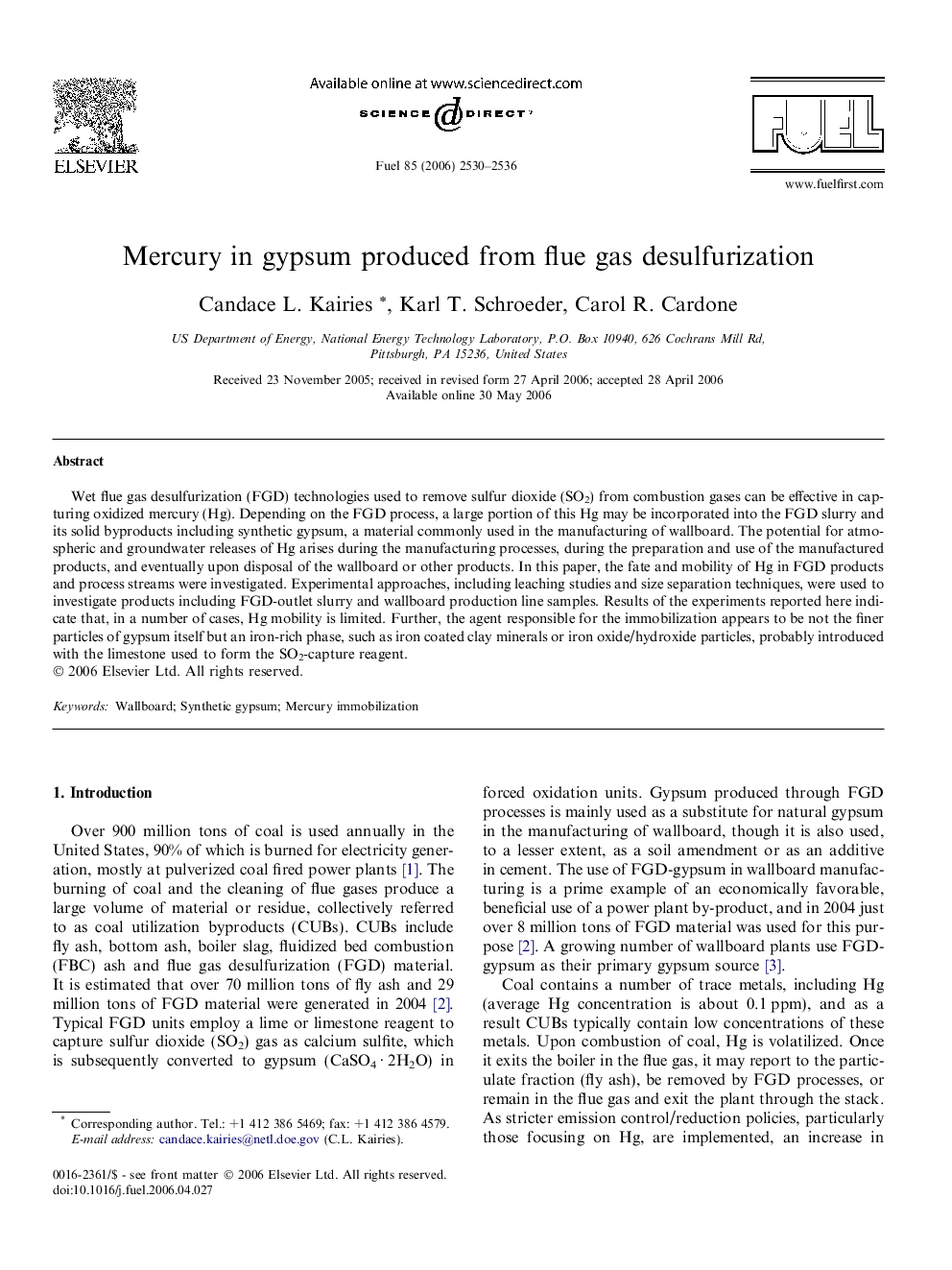| Article ID | Journal | Published Year | Pages | File Type |
|---|---|---|---|---|
| 208604 | Fuel | 2006 | 7 Pages |
Wet flue gas desulfurization (FGD) technologies used to remove sulfur dioxide (SO2) from combustion gases can be effective in capturing oxidized mercury (Hg). Depending on the FGD process, a large portion of this Hg may be incorporated into the FGD slurry and its solid byproducts including synthetic gypsum, a material commonly used in the manufacturing of wallboard. The potential for atmospheric and groundwater releases of Hg arises during the manufacturing processes, during the preparation and use of the manufactured products, and eventually upon disposal of the wallboard or other products. In this paper, the fate and mobility of Hg in FGD products and process streams were investigated. Experimental approaches, including leaching studies and size separation techniques, were used to investigate products including FGD-outlet slurry and wallboard production line samples. Results of the experiments reported here indicate that, in a number of cases, Hg mobility is limited. Further, the agent responsible for the immobilization appears to be not the finer particles of gypsum itself but an iron-rich phase, such as iron coated clay minerals or iron oxide/hydroxide particles, probably introduced with the limestone used to form the SO2-capture reagent.
